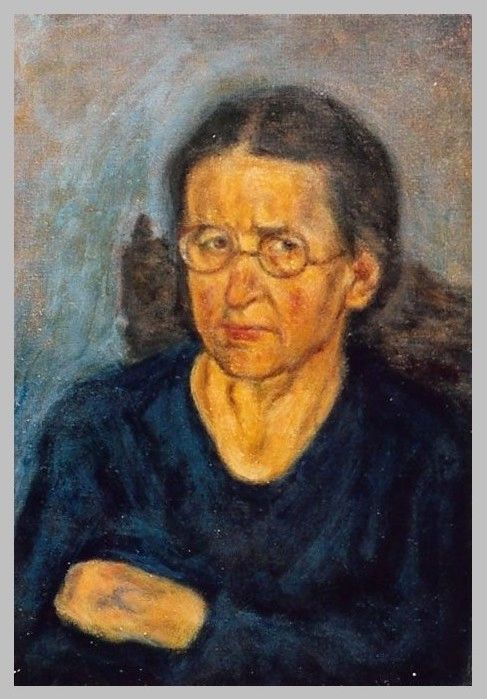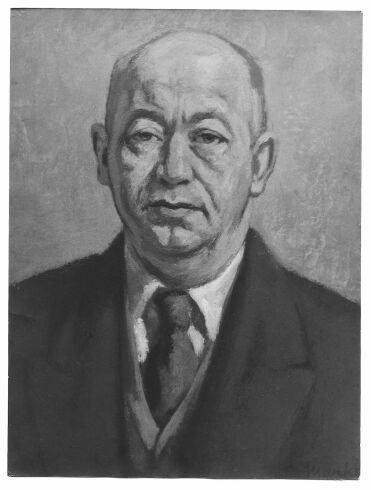Short
biography
Jacob Markiel
was born on 20 July 1911 in Lodz (Poland) in a modest traditional
Jewish
background. His father was an estate steward. His mother was left alone
to
bring up her children and had to do houses cleaning to insure the life
of the
family. Jacob kept a profound revolt against those who made him live
such a
life.
Marked by
hunger and cold, he had a deep admiration for his mother. As a
teenager, he
made a portrait of her, a portrait that he wanted to paint again at a
very old
age. Jacob also kept the respect of simple things from this childhood
At the age of
16 he met the sculptor Marek Schwarc. The latter introduced him to art
critic
Wilhelm Fallek, who had him admitted in 1929 to the Academy of Fine
Arts in
Krakow, where he remained until 1933. He took part in the National
Exhibition
(IPS) in Warsaw and then exhibited individually in 1931 (or 1933). He
moved at
this period in socialist and anarchist’s circles. The portrait of one
of them
was exhibited in Paris in 1946.
He came to
Paris in the autumn of 1934, and was a student of the Beaux Arts, in
Louis
Roger's studio. He exhibited in Lodz in 1937. The sculptor Nahum
Goldman
introduced him to the Rothschild family who became his support, but his
spirit
of independence led him to break with them.
In
Montparnasse, he met artists from Central Europe, companions of the
Paris School:
Soutine, Kikoïne, Kremègue, Dobrinsky, Schreter, all much older than
him.
In 1939, he
joined the Foreign Legion, his way of fighting Hitler. Deported to
Auschwitz
and Buchenwald, his robust constitution condemned him to the mine. In
the camps
his art was of no use to protect himself, because if the kapos and the
SS all wanted
the portrait of a child or a woman, the blows rained at the slightest
delay, as
Moshe Garbasz tells it in A Survivor.
It was General Schwartz, commander of the Auschwitz camp, who ordered him to make two larger-than-life statues of miners. He poured two large conc
rete blocks with
granite powder and carved the two statues out of this hard and brittle
material. Then it was necessary to move and lift the two blocks,
weighing several tons and measuring 2.50 m, with only starving deportees as
labor.
When the camps
were evacuated he was dragged into the death march to Czechoslovakia.
He
brought back a letter opener that he carved out of a piece of wood with
a nail.
The horrors of
war and the camps deeply traumatized him. However, there were only two
paintings;
a dead dove that was exhibited and a composition depicting deportees
dragging
the bodies of their comrades under the threat of a German soldier. When he was
liberated in 1945 and returned to Paris, he was welcomed by Dobrinsky.
He met
Esther again with whom he lived and who supported him all his life. He
went
back to work, first at the Beaux-Arts in Souverbie's studio, then took
a small
room near the Gare de l'Est. During these
years he moved in the post-war Montparnasse and reacquainted Kremègne,
Dobrinski,
Schreter who spent long evenings at home discussing and whose portraits
he made. He later found a workshop in Cité Falguière, an artists'
residence, until
1967 Throughout his
life Markiel observed nature, to be inspired by it, never to copy it.
He said
that a beautiful still life was one that represented the essential
things: a
piece of bread, a book, a glass of wine. Because of his
training he admired and understood all the great masters of the past,
from the
Italian primitives to Rembrandt or Velasquez, but he did not ignore
what
Chardin, Millet, Corot or Cezanne and Van Gogh did afterwards. He died at the
age of 95 in 2006 in Paris.


